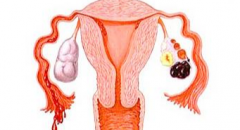A Therapeutic Target For Endometriosis That Triggers Dysmenorrhea And Infertility Has Been Identified
Endometriosis is a common gynecological disease caused by the endometrial planting of active endometrial cells outside the endometrium. The specific etiology of this disease is not completely understood, and its most common symptom is dysmenorrhea. In patients with endometriosis, the infertility rate is up to 40% to 50%. According to statistics, about 10% of women have endometriosis with varying degrees. Usually, the herbal medicine Fuyan Pill can be used to treat endometriosis, which can dispel diseased tissues, improve blood circulation and remove blood stasis.

The Necessity Of Long-term Management For Patients With Endometriosis
previous pageSunbathing Three Times A Year Can Increase The Risk Of Getting Endometriosis, Study Says
next page- Endometriosis and Debilitating Bowel & Bladder Pain: Diagnosis, Treatments, and Hope for Relief
- Struggling with Endometriosis Symptoms? Proven Back Pain and Painful Sex Relief Options
- Severe Endometriosis Treatment: Chronic Pelvic Pain Relief and Infertility Solutions
- New Endometriosis Pill Approved on NHS: What This Means for Patients and the Role of Traditional Chinese Medicine
- Can Endometriosis Be Endured Until Menopause?
Testimonials
- Adenomyosis with Ureaplasma Urealyticum Cured by Fuyan Pill
- Tubal blockage with hydrosalpinx can be cured by TCM shortly
- Fuyan Pill Helps A woman with Adenomyosis Get Pregnant
- A Woman with Hydrosalpinx Is Cured with Fuyan pill
- Pelvic Inflammatory Disease Testimonials
- Irregular Vaginal Bleeding and Endometrial Thickening Cured by Fuyan Pill
- Pruritus Vulvae and Frequent Urination: Mycoplasma Infection Cured after 2 Courses



